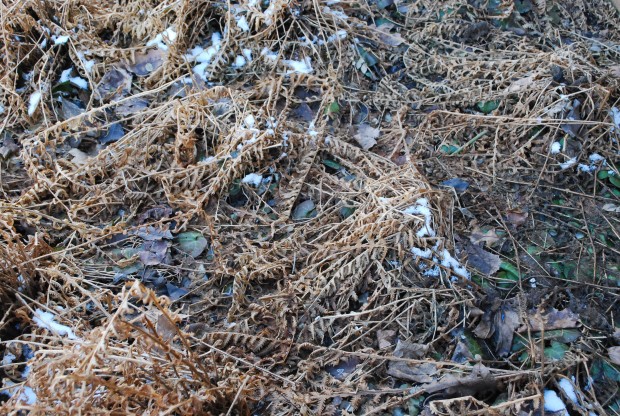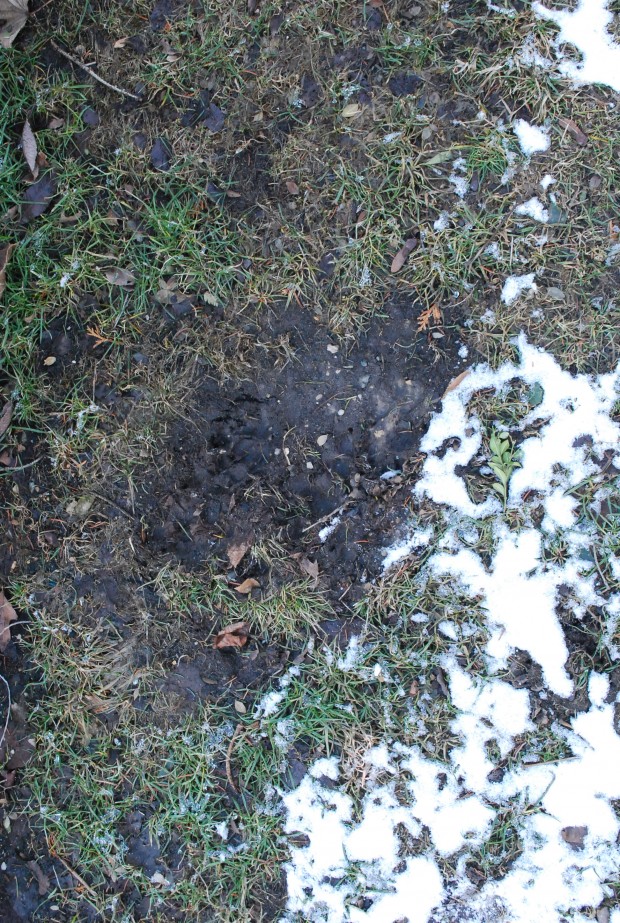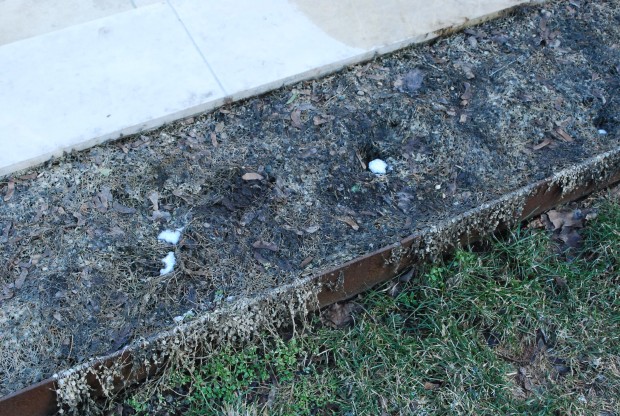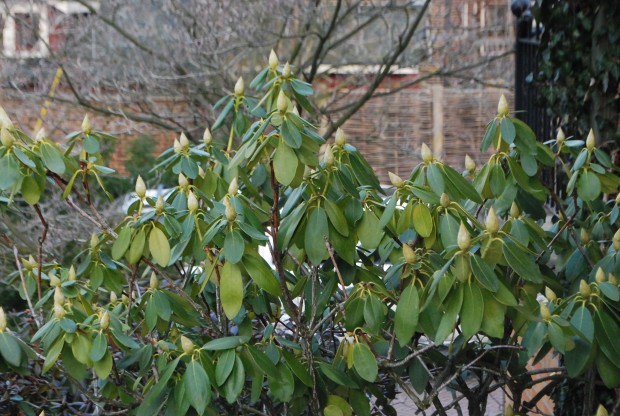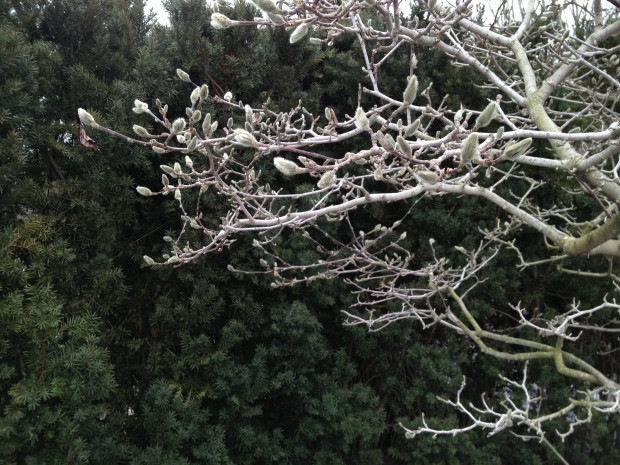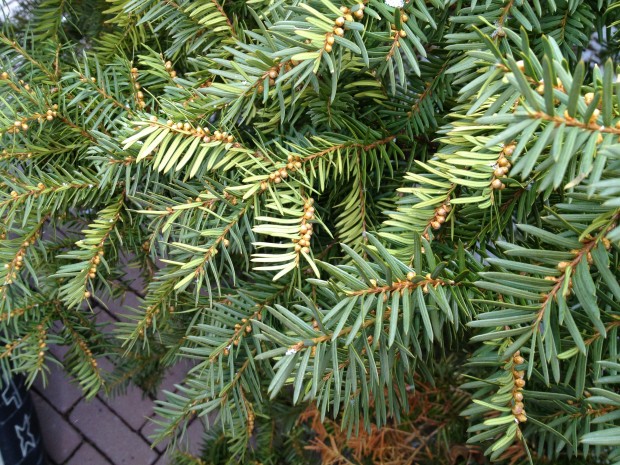If you garden, March is an acutely disappointing month. If March feels like an illness to you, it is. That late winter gardener’s fever–entirely predictable. The hope that spring is almost here when it is in fact many weeks away-a normal symptom of said illness. Once March arrives, no matter what constitutes likely and reasonable, I am over the winter. I have eyes, ears and a nose for spring. Though I have written this in countless ways for the last month, this time I really mean it! The thought that spring is near has been much on my mind- for weeks. What the gardening heart hopes for bears no remote resemblance to reality-that conflict would be a good definition of a Michigan March. Hope versus reality-game on.
My yard is a trashed by the winter.The grass is the color of hay. That hay has been pounded into the ground by the corgis, so the color is actually dirty hay. How many gallons of paint do you suppose a paint manufacturer might sell if they names a color dirty hay? Well, ok, gardeners might warm up to it. But the idea of dirty hay is pretty unappetizing. Just like March in Michigan.
The isotoma around my fountain at home looks dead. The leaves are brown and black, accented by a glaze of rot. Who knows if or how much of it has survived this winter. Some of the coldest days of the winter are courtesy of this March. How it looks right now-horrifying. The clematis are but brittle sticks, and the boxwood are burned. My moss stuffed cow-known as Lady Miss Bunny, has dead weeds sticking out of her side. Dead rotting leaves are sprinkled all over the yard. Could my garden possibly look worse than it does right now?
The European ginger? The leaves are limp, and lay flat on the ground-exhausted. I so understand this feeling. The look of it-I try not to look. Many of the leaves have those large black patches gardeners know as decomposition. I do not dare clean them up yet-we have night forecasts in the 20’s for the next week. Most of the snow was gone, meaning really cold night temperatures could hurt.
My hopes for March are always unrealistic. Last year’s March was warm-enticing. Though it satisfied my need for an early spring, it made me uneasy. April confirmed that unease. Freezing temperatures over an extended period of April days was destructive to early spring flowering trees, maples, and birch. No spring for us, last year. The 2012 spring disaster- every gardener in my zone remembers. The nights covering vulnerable plants to no avail. All of the hellebores blooming collapsed in pathetic heaps on the ground. Such shock-realizing that our spring would be erased by deadly low temperatures. Gardeners far away wrote to me, their voices charged with grief and irritation very much like mine. Gardeners in my zone and in many other regions have been waiting for a glorious spring for close to 2 years.
March is anything but a spring month; March is in fact the last of the winter season. We have has snow more days these first 2 weeks of March, than not. A single oddball 62 degree day made me believe the winter was over-I truly believed that the crocus, eranthis and hellebores were but days away. But one day does not a spring season make. The utter cold has returned; just this morning, four inches of fresh snow. I m shoveling, not gardening. March is a month marked by the tumultuous transition from one season to another. Sometimes that transition is easy and sensible. Other times that transition is so slow, boring, and treacherous, one could weep.
The trees and shrubs have no such angst. They go dormant given the day length and temperatures. They set buds for spring season, months ahead. They prepare. They have no expectation of mercy. They wait. The urge to emerge revolves around a complex set of conditions. Natural relationships that culminate in the OK to grow.
A bud is an undeveloped shoot. A leaf or a flower shoot. Once formed, that bud may lay dormant for months, waiting for the moment when conditions favor growth. When woody plants form buds, the exterior of that bud is tough-encapsulating. Breaking dormancy is a very vulnerable state-best not to do so, unless there is a reasonable expectation of success. Nature provides mechanisms by which that tender stage we call growth is protected from its enemies, until the time is right. Many plant buds are covered in scales. These modified leaves protect the life brewing within that bud from cold, wind,and physical insult.
Many buds are covered in a gummy substance that further protects them from untoward conditions. These magnolia flower buds have a remarkably rigid hinged casing that is covered in soft downy hair. This magnolia is always the first plant to bloom in my yard. The buds are swelling, meaning that spring will arrive. Everywhere in my zone the buds are beginning to swell. They anticipate spring in a very different way than I do. They intuit the natural shift of the season. They respond to that subtle change in conditions, in a slow and subtle way. These buds may swell, but they won’t break dormancy until there is a more extended period of moderate weather.
The buds can hold a very long time, if the weather does not take a more friendly turn. Most perennials have naked buds. What you see in this picture is the remains of my asparagus. The spring shoots are still safely ensconced below ground. They have little defense against bitter cold. They stay dormant, buds and all, until they have the all clear. The leaf buds of the roses, encased in the same waxy substance as the stems. They are ready, but holding their cards close.
The cream colored knobs on this yew-the flowers that will hardly be noticed. The flowering stage is remarkable, the day a gust of wind throws a cloud of yellow pollen into the air. At the tip of each branch, an elongated bud known as a candle. Named for its resemblance to a candle, this growth tip is comprised of the countless needles which will populate the new shoots. These needles lay flat against the stem, until the spring weather encourages them to spread out and grow. The buds do a better job of predicting the arrival of spring than my winter weary heart.
